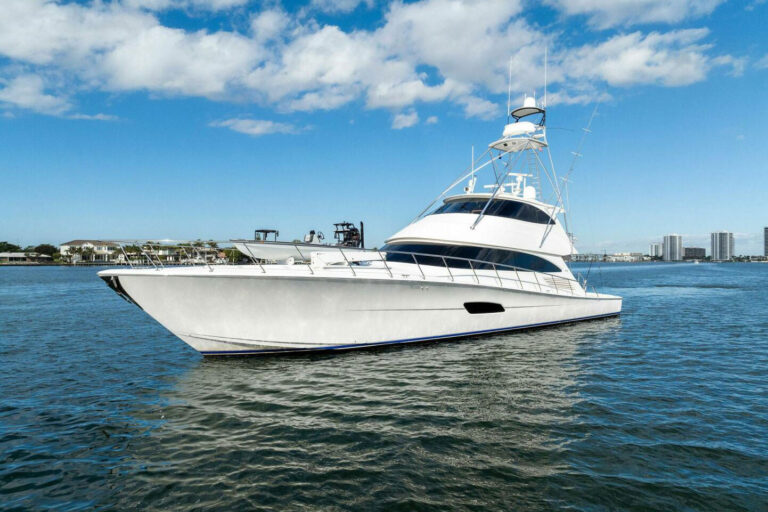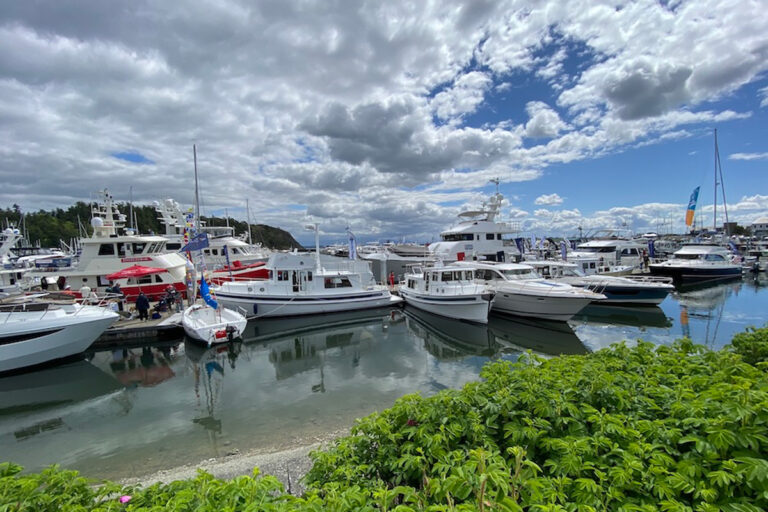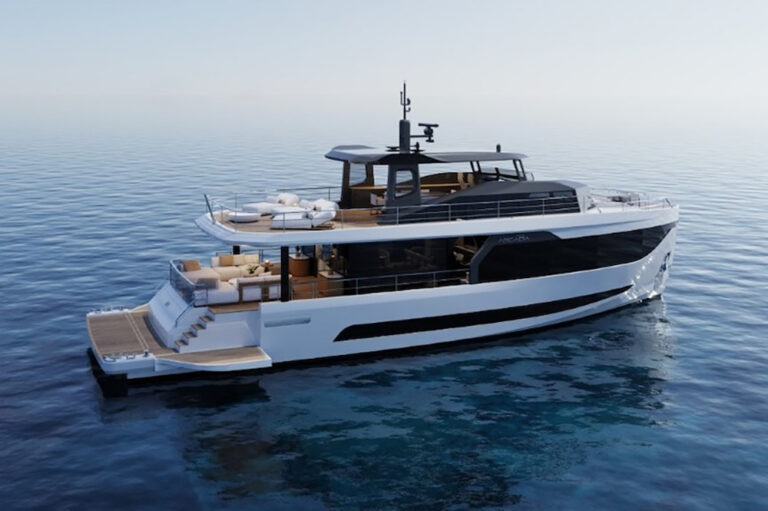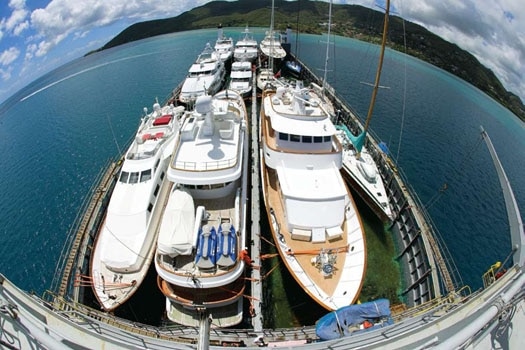
ytgjan09dockwise525.jpg
When your job sends you to the Italian Riviera, the first thought people have is, well, unsympathetic. Uncharitable. Sometimes downright bitter. They envision the aft deck of a megayacht, a plate of antipasto and a chilled bottle of prosecco nearby, the sun dipping into the Mediterranean as the gorgeous hillside town behind you basks in the gloaming. It all seems terribly romantic.
But the reality is that a gray deluge had been falling for five days straight, and the view from my room was not of an ancient piazza where pigeons gathered and church bells pealed from a 500-yearold chapel belfry-no, my view was from a porthole that didn’t open, over a gritty waterfront of empty containers and giant cranes. Even the seagulls had opted for a more picturesque location. I was aboard Yacht Express, a 686-foot, semi-submersible vessel that would carry 16 yachts-like a floating tractor trailer-all the way from Porto di Voltri in Genoa, Italy, to Port Everglades, Florida.
My first glimpse of the ship was the day before. A 20-minute cab ride from downtown Genoa took me onto the autostrada and through countless tunnels. Just as I began to suspect that my taxi driver would double back and leave me two blocks from where we started (for a mere 100 euros) I saw the ship. She was massive enough for us to navigate to by sight, from miles away-as we exited the highway and sped along the service roads of the terminal, she towered above rows of container stacks.
The taxi deposited me on the dock in the pouring rain and I craned my head back to see over the bow and up to the bridge. To port was a railing along the dock and as I walked back, there were two racing sailboats and a large Azimut bobbing contentedly. All the way down the dock, a large Perini Navi sailing yacht was approaching, also to tie up alongside. “Oh well, I guess this ship’s not so big after all,” I thought, a split second before it hit me. These yachts weren’t alongside the bulkhead-the “dock” was the submerged stern of Yacht Express and what I thought was a “railing” was, in fact, one of three catwalks that ran the length of the stern-the only part of the aft deck that was high and dry. These three yachts had already floated aboard Yacht Express, and in the harbor I saw a dozen other vessels circling patiently, waiting their turn to approach. A bright orange tug stood by and a pilot boat herded the waiting yachts over to one side as a huge container ship left the port for the open sea.
A man in a fluorescent orange jumpsuit and hardhat met me near a giant fender that was permanently fixed to the dock. “Please to come aboard. I take your bag. Be very careful.” I stepped on the fender, climbed over the railing, and trailed obediently behind him as we splashed one, two, three decks up to the ship’s atrium. A glass cabin that protrudes over the stern of the ship, the atrium offers an ideal view of the loading process.
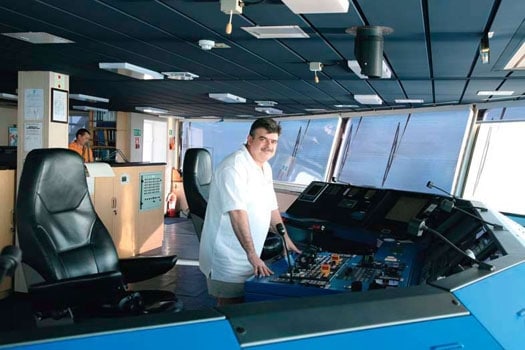
| | |
Inside, I met Alessandra Terzi, the Dockwise representative from the Genoa office. She is the initial contact and responsible for all of the paperwork involved in bringing yachts bound from the Mediterranean to the Caribbean aboard Yacht Express. One by one, as their vessels came aboard, crew climbed to the atrium to meet Alessandra and sign final documents. The 125-foot Perini-Navi P2 seemed to slow the process slightly. They tied her to the starboard catwalk, then floated her across to the port railing.
Later, I asked Loading Master Tiekke Sprenger if securing P2 had been a difficult job. She smiled, “We prefer to say ‘Out of the ordinary,'” and went on to explain the normal boarding process. The ship takes on seawater ballast, submerging the stern. The yachts are floated aboard and positioned over yellow temporary supports. Sailboats have custom cradles that are built and secured to the deck in advance of boarding. On this particular loading day, two racing yachts and the P2 had delicate keels and required extra care in being fitted into their cradles-these were the first vessels to board.
“For this, we bring the yacht in and secure her beside the cribbing. Then we send divers in and move the boat across the aft deck, being careful to make sure the keel doesn’t strike the cradle.”
In the case of P2, Tiekke said that months of preparation had gone into the yacht’s crossing plans. “In every case, we work with a draftsman to plan the supports based on the boat make, model, weight, and any special attributes. In the case of P2, they did substantial preparation of their own ahead of time, too.”
Nonetheless, crewmember John Niles from P2 told me he was impressed by the carefulness of Yacht Express. P2’s cradle was designed to fit like a glove, but Tiekke added plenty of extra supports, too.
And no wonder: Yacht Express carries full insurance on every boat. “We are responsible from the moment the yacht crosses our stern,” said Terzi, adding, with a smile “although there is a $1,000 deductible.” That might cover a couple of P2’s fenders if they were damaged, but that’s about it. It’s obviously in Yacht Express’s best interest, as well as the customers’, to be so conscientious about planning, securing, and double-checking everything.
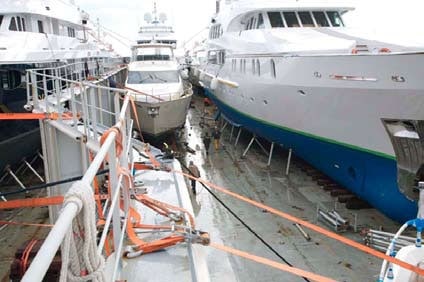
| | |
After all the vessels are secured, the ballast tanks are drained, the ship rises, and the stern drains. When it’s dry, hull fastenings are reinforced, lashings are adjusted, and every hull is inspected. At the other end of the journey, the process is basically repeated in reverse. The stern is flooded, divers go in to release the sea fastenings, and the yachts float free of the yellow temporary supports-3,000 miles and 15 days after they were first erected.
Not surprisingly, Yacht Express is no ordinary ship. Built in 2007 at the Yantai Raffles Shipyard in China, the ship-all 12 decks of her-is really a marvel of engineering. The engineroom alone takes up five decks. Ordinary components are so large that they’re unrecognizable. The bow-thruster motors, for instance, are about five feet tall and at least four feet each in diameter.
The main engines are twin Wartsila 12V38B-CRs, generating 8,700kW each, driving port and starboard Azimuth thrusters. There are also twin Wartsila 6L20 auxiliary engines. The computerized ballast handles the almost 35,000 tons of seawater that makes Yacht Express do its magic flooding trick.
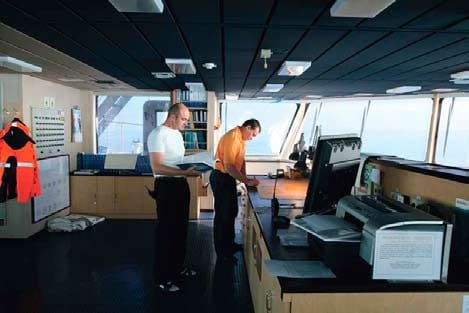
| | |
The crew is mostly Ukrainian, hard-working and friendly. Officers typically work four months on and four months off, other crew members can spend much longer at sea, with a much shorter relief time. Yacht crew are welcome to dine in the mess where three meals a day are served-stuffed peppers, cutlets, blinis, lamb-burgers-the food is homey and hearty. Yacht Express also has a deep plunge pool and a fitness room with a ping pong table, to help transiting crew while away the long crossing.
There are two comfortable but spartan rider staterooms with heads aboard Yacht Express, but most crew stay aboard their yachts. On this trip there were 16 vessels aboard ranging in size from a 45- foot Wally tender to the 164-foot Odessa. Alessandra noted that their last trip across they had carried nothing but megayachts. “It depends on the time of year,” she added.
So does the price. In general, yachts are charged by the amount of square footage they occupy onboard the yacht-carrier dock bay. “Rates are also lower during counter season,” said Catalina Bujor, Dockwise’s Marketing Director and PR Officer. “For example, if a yacht owner isn’t under any time pressures, it is more cost effective to cross from the East Coast USA to the Med in the winter months. Spring is the high season for sailing to the Med. In the fall, most yachts want to escape the chilly winter weather in the Med, so they head over to warmer climates such as the Caribbean or South Florida.” Many factors go into determining the final cost of transporting a yacht, and Dockwise will work with you to determine a fair price.
Carlos Figueroa of Elisa, a 150-foot Christensen, and Delcio Patrio da Silva, aboard the 90-foot Moonen Commercial Break, talked glowingly about their Yacht Express experiences.
“We were planning to bring the yacht across ourselves,” said da Silva, “But with the cost of fuel, this was about $15,000 less expensive.”
“Plus, it gives you time to do some bottom work,” added Figueroa, who said he was sanding and repainting just below the waterline. “The days aren’t wasted,” he said. “You can get a lot done on the way over, which means less time in the yard and more time for the owners to enjoy their boat.”
After a two-day ride across the Mediterranean, Yacht Express paused in the Straits of Gibraltar long enough for me to disembark. It was 2 a.m. when I stepped through the pilot’s door on the aft deck and climbed down into a waiting launch. The night sky was inky black but studded with brilliant stars. As we bounced across the sea toward the coast, weaving between anchored freighters and tankers of a dozen different flags, I watched the twinkling lights of Yacht Express head off across the Atlantic. It all felt very John LeCarré and I thought, Who needs sunset over the stern of a megayacht? Give me the chilly air, a gently lapping sea as far as the eye can see, and a starry night sky above a passing ship-that’s my kind of romance.
Dockwise Yacht Transport, (954)525-8707; www.yacht-transport.com





